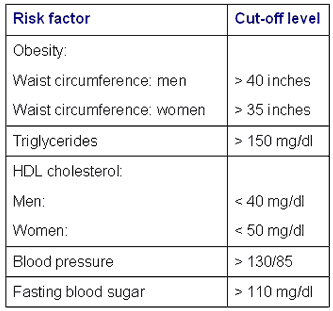September 27 is World Heart Day, a day that emphasises the need for people young and old to take heart health seriously.
Heart disease, earlier believed to be a health concern for middle-aged people, is now striking more young people and women. While heart conditions may vary in degree, it is important to recognise the risk factors you may be exposed to that make you more vulnerable.
What is a risk factor?
Scientific studies have shown that certain traits and lifestyle habits increase the risk of a heart attack. These danger signs are called 'risk factors'. The progression of heart disease is a long-term process in which cholesterol and other substances build up in the inner lining of artery walls. They form plaque, which blocks the flow of blood to the heart muscle.
Risk factors tend to speed the development of plaque, and by reducing them, we can block the progression of plaque formation and decrease the chances of having a heart attack.
There are two types of risk factors: those which can be modified and those which cannot.
- The force or pressure of the blood (pumped from the heart) against the walls of the arteries is known as blood pressure.
- Systolic blood pressure (top or high number) is the pressure inside your arteries when the heart contracts and pumps blood into your arteries.
- Diastolic blood pressure (bottom or low number) is the pressure inside your arteries when the heart is relaxing and filling with blood.
- The medical term for high blood pressure is hypertension. Over time, high blood pressure can damage your blood vessels and lead to serious health problems.
- The common long-term complications of high blood pressure are: heart disease, stroke, eye damage, kidney damage etc.
- Some people get nervous during a visit to their doctor's office and this causes their blood pressure to increase. They are said to have 'white coat hypertension'. This may not be a sustained condition but may lead to hypertension.
- It is a common misconception that your systolic BP should be your age plus 100. This is FALSE. The latest international guidelines for blood pressure are:
NOTE: You are considered to have the risk factor of hypertension, even if your BP is controlled with medications.
- Cholesterol is a soft, white, fat-like substance made in the liver and found in your body's cells.
- Cholesterol is present in some of the foods we consume, which are of animal origin (eg meat, milk)
- The combination of cholesterol and protein is known as a lipoprotein (lipo or lipid means fat)
- The lipid profile (which your doctor may ask you to get), consists of your total cholesterol, triglycerides, LDL, and HDL.
- LDL is called 'bad' cholesterol because it causes atherosclerotic plaque to build up inside your coronary arteries.
- HDL is called 'good' cholesterol because it helps to remove LDL cholesterol from the walls of your coronary arteries.
- Triglycerides are fatty substances found in the bloodstream. High triglycerides are associated with the build up of blockages inside the coronary arteries.
Given alongside are the values recommended to keep your risk for heart disease to a minimum.
These are risk factors that you cannot control.
- The risk of heart disease increases with age. Studies have shown that the risk rises sharply for men after the age of 45 and for women after age 55.
- These figures are based on international data. In our country we have observed men at a much younger age also having heart disease.
- Heart disease is not a 'man's disease'; women suffer as well, but generally after menopause.
- Your genes play an important role in your risk for heart disease. If a male in your immediate family has had heart disease before the age of 55 or if a female family member has had heart disease before the age of 65, your risk is increased several fold.
- New studies are also showing that Indians have a higher risk for developing heart disease than those from other countries.








